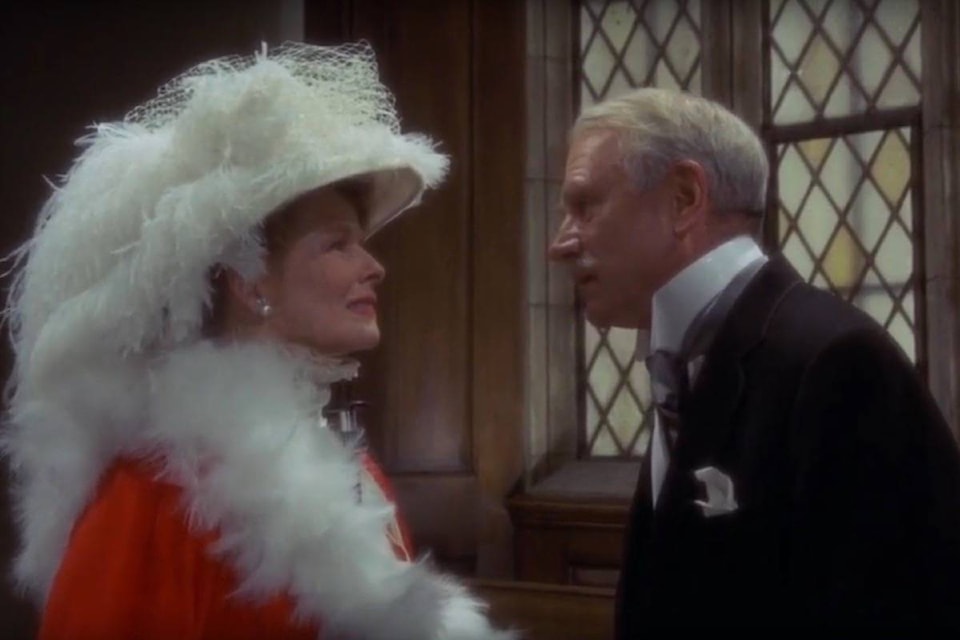For four decades I have been haunted by a melody, but I was recently able to lay the ghost to rest, and rediscover a gem of a movie into the bargain.
First, the melody. It would pop into my head once or twice a year, unbidden, and what was frustrating was that it was clearly a) a real piece of music, not something I had dreamt up and b) a piece I knew well, because it was fully formed and orchestrated: a series of arpeggios played on a keyboard instrument (it sounded like a pianoforte), followed by a sweeping, romantic section of violins and flute, followed by a repeat of the opening that ended on a long, sustained note.
Every time I “heard” it, I would try in vain to pin down where it was from, but the source eluded me. It was almost certainly from a TV show or a film, but that did not get me any further ahead. Frustrating? Yes, but as it happened so infrequently I didn’t dwell on it.
About two weeks ago I was sitting in my study at home, when apropos of nothing at all I thought of a movie I had not seen in years: 1975’s Love Among the Ruins, made for ABC-TV and starring Katharine Hepburn and Laurence Olivier at a time when two acting legends of their stature appearing in something on network television was a Very Big Deal indeed. I had used the final scene as an acting exercise with my friend Chris McGuire in drama class in 1980 or thereabouts, and was now seized with a desire to see it again, so over to YouTube I went, hoping some kind soul had seen fit to post it.
To my delight, there was the whole film, and I pushed “play”. I had another screen open on my computer, and went back to it momentarily as the film started.
Well, you’ll have guessed where this is going. There was my mystery melody, precisely as it had played out in my head so many times. I had perfectly recalled every note, every beat, and as the film played I realized that I also remembered many of the lines, down to the exact inflections and tiniest of pauses, even though I had not seen or heard the film for some 40 years.
What I had done, all those years ago, was record the entire film on a tape recorder and then listen to it, probably many times; something I did a lot, back in those pre-VHS days, with anything on TV I wanted to preserve. Seeing and hearing it again after so long gave me a momentary pause: was it as good as I remembered?
Yes. In addition to Hepburn and Olivier (four Academy Awards each, and another 23 nominations between them), the film was directed by the legendary George Cukor (four nominations, plus a win for My Fair Lady), scored by John Barry (five wins and another two nominations), and had as director of photography the great Douglas Slocombe (three nominations). It was written by James Costigan, who won an Emmy Award (his second of three) for the screenplay, which is set in London in 1911 and features Olivier as Sir Arthur Granville-Jones, a barrister who is hired to defend Jessica Medlicott (Hepburn), a widow who is being sued for breach of promise by a very much younger man whom she had promised to marry before breaking off the engagement.
Both characters are in their late 60s, and it soon becomes clear that they knew each other many years earlier (in Toronto!). Arthur, who has never narried, was passionately in love with Jessica and remembers every second of their three-day liaison. Jessica, however, claims not to remember it at all, setting off a delightful film filled with misunderstandings, cross-purposes, scandal, wit, wisdom, and bittersweet romance.
It was a genuine pleasure to see the film again after 40 years, rediscover a forgotten gem, and solve my musical mystery. Do the pair find love among the ruins, 40 years after they first met? Watch it (at https://bit.ly/3c2B3yw) and see for yourself; you won’t regret it.
editorial@accjournal.ca
Like us on Facebook and follow us on Twitter
